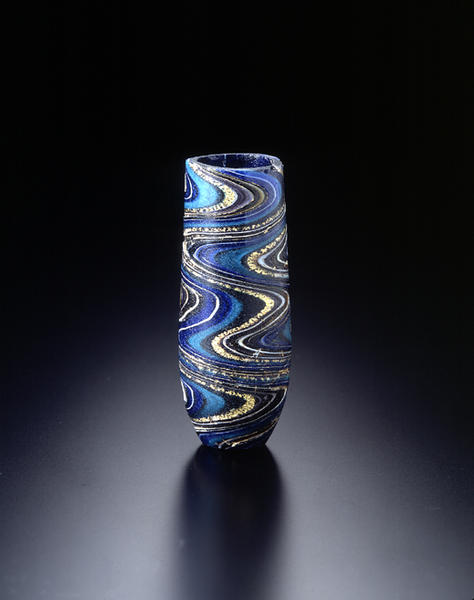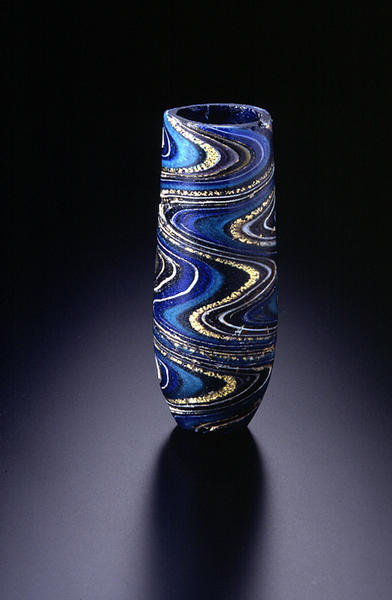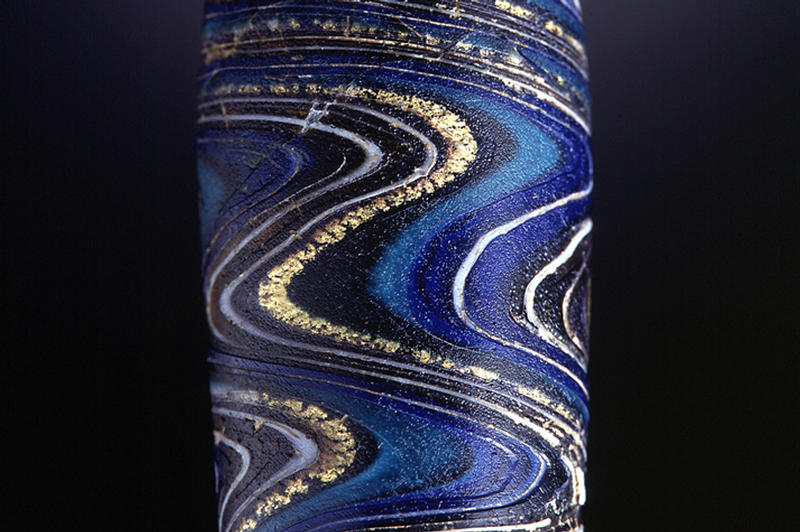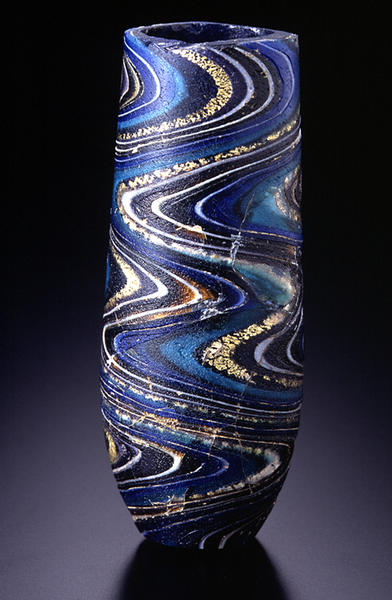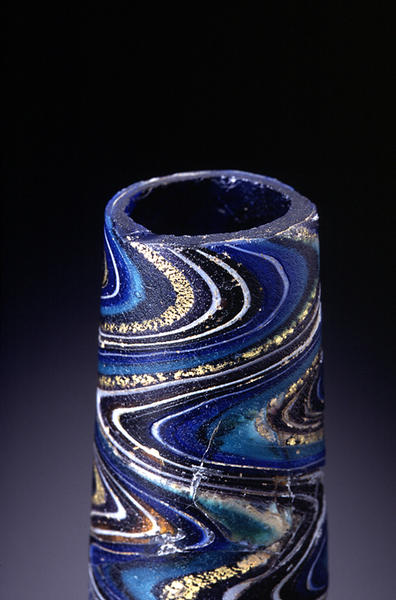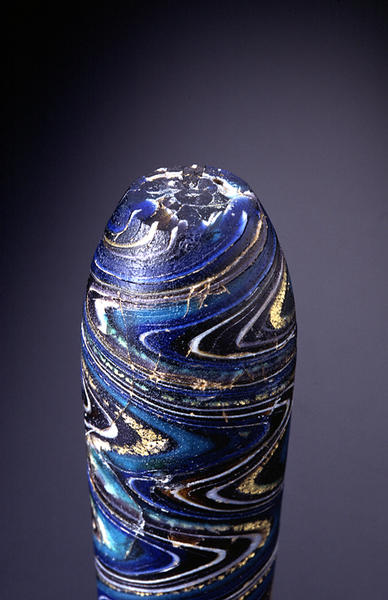Gold Band Alabastron
- Eastern Mediterranean
- 1st century B.C.
- Glass
- H-8.2
Catalogue Entry
When glass bands imbedded with gold flakes are mixed into the color bands of a marble glass form, the glass is referred to as "gold band glass." This work has an indigo semi-translucent glass cylindrical body covered with glass bands of semi-translucent green, white on blue ground, white on brown ground, and translucent with gold flake bands. This set of bands is then repeated six times across the vertical expanse of the jar in wavy, melted forms. The walls of the jar are thick and heavy.
There are also examples of this type of lidded jar in the British Museum and the Metropolitan Museum, New York, and judging from these examples, it is thought that originally this jar was an alabastron shaped jar with a lid, and at some point during the ancient period, the tops and bottom sections were cut off of the jar. This jar would have been originally used as a container for perfumed oil.
